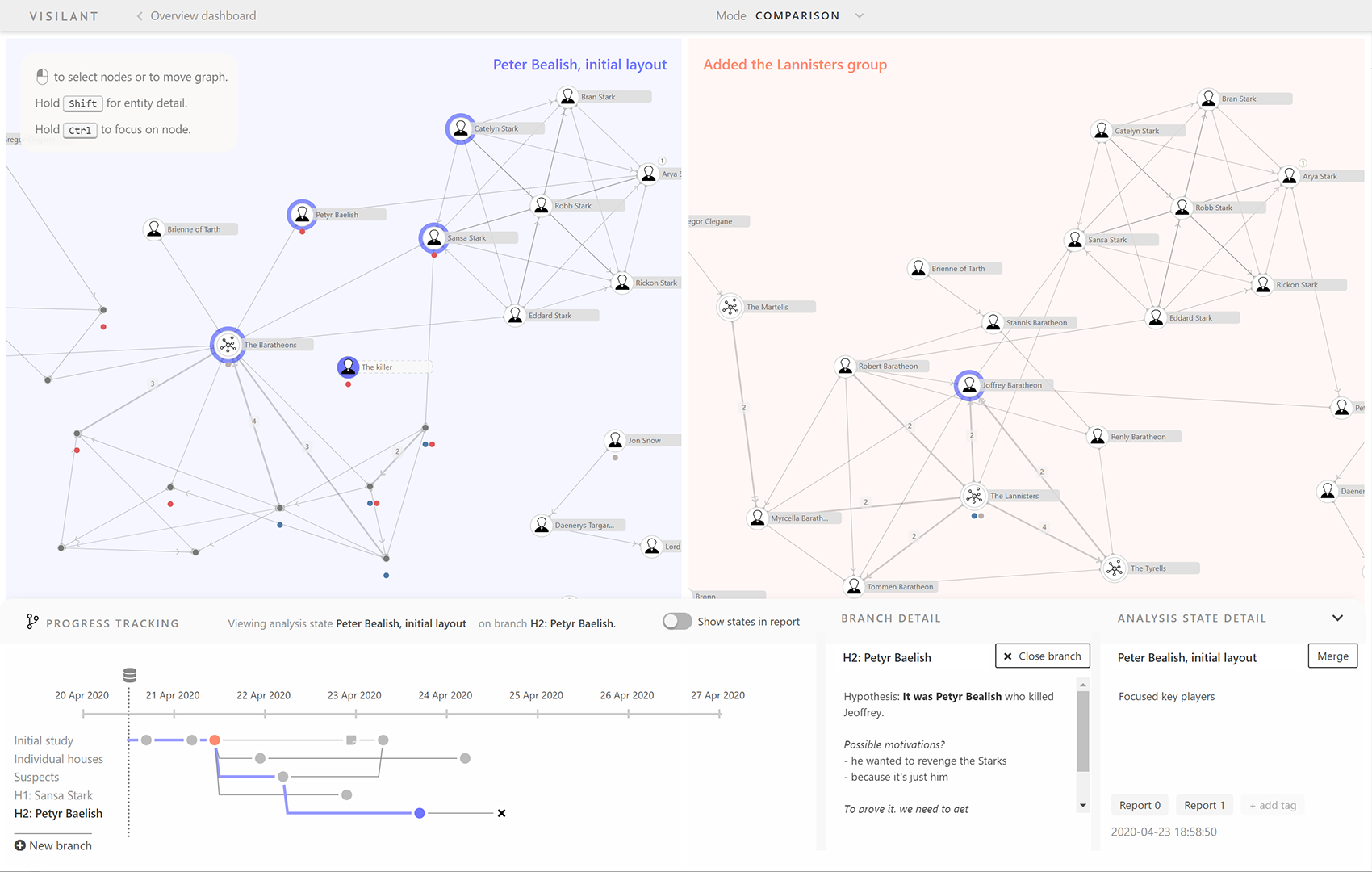Visilant: Visual Support for the Exploration and Analytical Process Tracking in Criminal Investigations
Kristina Zakopcanova, Marko Rehacek, Jozef Batrna, Daniel Plakinger, Sergej Stoppel, Barbora Kozlikova
External link (DOI)
View presentation:2020-10-28T16:30:00ZGMT-0600Change your timezone on the schedule page
2020-10-28T16:30:00Z

Fast forward
Direct link to video on YouTube: https://youtu.be/xMcE5toAoxY
Keywords
Graph/Network and Tree Data, Application Motivated Visualization, Social Science, Education, Humanities, Journalism, Intelligence Analysis, Knowledge Work, Data Analysis, Reasoning, Problem Solving, and Decision Making
Abstract
The daily routine of criminal investigators consists of a thorough analysis of highly complex and heterogeneous data of crime cases. Such data can consist of case descriptions, testimonies, criminal networks, spatial and temporal information, and virtually any other data that is relevant for the case. Criminal investigators work under heavy time pressure to analyze the data for relationships, propose and verify several hypotheses, and derive final conclusions, while the data can be incomplete or inconsistent and is changed and updated over the course of the investigation, as new findings are added to the case. Based on a four-year intense collaboration with criminalists, we present a conceptual design for a visual tool supporting the investigation workflow and Visilant, a web-based tool for the exploration and analysis of criminal data guided by the proposed design. Visilant aims to support namely the exploratory part of the investigation pipeline, from case overview, through exploration and hypothesis generation, to the case presentation. Visilant tracks the reasoning process, and as the data is changing, it informs investigators which hypotheses are affected by the data change and should be revised. The tool was evaluated by senior criminology experts within two sessions and their feedback is summarized in the paper. Additional supplementary material contains the technical details and exemplary case study.